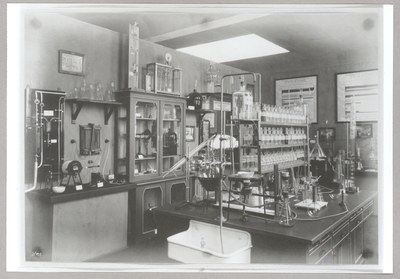M.A. Christine Brecht
- Name
- M.A. Christine Brecht
- christinebrecht (at) gmail.com
Vita
Christine Brecht studied history, philosophy and political science at TU Berlin. She was a research assistant at the Center for Interdisciplinary Women’ s and Gender Studies at TU Berlin (1997–1999) and at the Center for Contemporary History Potsdam (2005–2008). Furthermore she worked at museums and memorial sites and organized exhibitions and other public history projects as an independent researcher. Since 2013 she is a doctoral candidate at the Chair for the History of Science at Humboldt-Universität zu Berlin. Since 2017 she is also a lecturer in museum studies at HTW Berlin.
Research interest
- History of modern science and technology
- Museum and exhibition studies
- Contemporary history of Berlin
Current project
The site of hygiene exhibitions: Placing Dresden 1911 in the history of knowledge
 While hygiene exhibitions can be traced back to the 1870s, most historians have situated them in the context of twentieth century’s health education and body politics, especially in the German case. Thus, the fact that these object lessons addressed and involved not only lay audiences but also a whole range of scientific experts remained largely unacknowleged. Highlighting the Internationale Hygieneausstellung Dresden 1911, one of the greatest exhibitions of its genre at the time, the project explores the historical contingencies and meanings of both modes of knowledge presentation, mass instruction as well as science communication. It focuses on the specific actors and practices of exhibiting and thereby raises the following questions: How were scientific instruments and objects to be shown and seen in the different sections of Dresden 1911? Which modes of display – old and new, commercial or museological – were at stake? Where did the exhibits come from, be it their disciplinary, institutional, national or colonial points of origin? In which ways did scientists (e. g. bacteriologists, food chemists and industrial hygienists) participate, whether as exhibitors, curators, commentators and/or visitors? Besides substantial written record the project draws on selected photographs, maps, drafts und other graphical materials in order to place Dresden 1911 in the larger history of the presentation of scientific knowledge in exhibitionary spaces.
While hygiene exhibitions can be traced back to the 1870s, most historians have situated them in the context of twentieth century’s health education and body politics, especially in the German case. Thus, the fact that these object lessons addressed and involved not only lay audiences but also a whole range of scientific experts remained largely unacknowleged. Highlighting the Internationale Hygieneausstellung Dresden 1911, one of the greatest exhibitions of its genre at the time, the project explores the historical contingencies and meanings of both modes of knowledge presentation, mass instruction as well as science communication. It focuses on the specific actors and practices of exhibiting and thereby raises the following questions: How were scientific instruments and objects to be shown and seen in the different sections of Dresden 1911? Which modes of display – old and new, commercial or museological – were at stake? Where did the exhibits come from, be it their disciplinary, institutional, national or colonial points of origin? In which ways did scientists (e. g. bacteriologists, food chemists and industrial hygienists) participate, whether as exhibitors, curators, commentators and/or visitors? Besides substantial written record the project draws on selected photographs, maps, drafts und other graphical materials in order to place Dresden 1911 in the larger history of the presentation of scientific knowledge in exhibitionary spaces.
Picture credit: Laboratory exhibit in the nutrition hall of the Internationale Hygieneausstellung Dresden 1911. Deutsches Hygiene-Museum Dresden, Sammlung, DHMD 2001/196.60.
Publications
Articles
- Populäres Wissen – Einleitung, in: WerkstattGeschichte 23 (1999), S. 4-12 (with Barbara Orland)
- Das Publikum belehren – Wissenschaft zelebrieren. Bakterien in der Ausstellung „Volkskrankheiten und ihre Bekämpfung“ von 1903, in: Christoph Gradmann/Thomas Schlich (Hg.), Strategien der Kausalität. Konzeptionen der Krankheitsverursachung im 19. und 20. Jahrhundert, Pfaffenweiler 1999, S. 53-76
- Displaying the Invisible: ”Volkskrankheiten” on Exhibition in Imperial Germany, in: Studies in the History and Philosophy of Biological and Biomedical Sciences 31 (2000), S. 511-530 (with Sybilla Nikolow)
- Enthaltsamkeit in Weimar. Oder: Karriere einer Bildtafel, in: Barbara Duden/Karen Hagemann/Regina Schulte/Ulrike Weckel (Hg.), Geschichte in Geschichten. Ein historisches Lesebuch. Festschrift für Karin Hausen, Frankfurt am Main/New York 2003, S. 311-318
Reviews
- Review of: Susanne Köstering, Natur zum Anschauen. Das Naturkundemuseum des deutschen Kaiserreichs 1871-1914. Köln 2003 , in: H-Soz-Kult, 28.11.2003, <www.hsozkult.de/publicationreview/id/rezbuecher-2770>.
